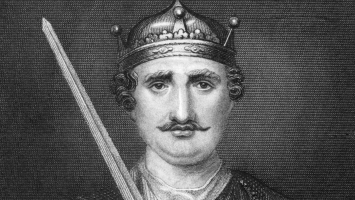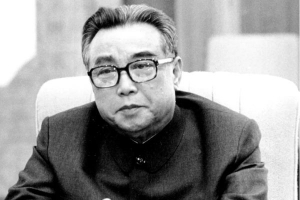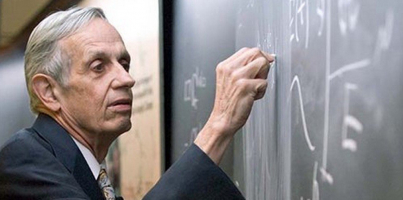Top 8 Interesting Facts about Prague
Prague is one of the most fable-like capital cities in Europe with its rich history, stunning architecture with the renowned Charles Bridge, and delightful Old ... read more...Town with its cobblestone streets, stylish cafés, and lively pubs. But there is much more to this beautiful city than the majority of tourists will ever realize. Here are interesting facts about Prague that you probably didn't know.
-
Prague is regarded as the "City of Hundred Spires," but is this designation accurate or merely a myth dreamt up to draw tourists? Many fans attempted to count every tower and spire from a higher vantage point or even from an airplane, and they came up with a figure (or numbers) that they believed to be correct.
Prague is home to around 120 notable spires and turrets, and those are just the main ones. There are hundreds and hundreds of spires, and depending on how you count, the total ranges from 500 to 1000. Furthermore, the little spires on the residential homes are not included in this figure.
Prague truly is a city of spires, and there are much more of them than the cliché suggests, as you can see. It also means that you may anticipate your trip since, as we guarantee, the city is exceedingly picturesque. The Powder Gate, New Town Hall, St. Vitus Cathedral, and Petrin Lookout Tower are the most well-known towers or structures with towers in Prague.
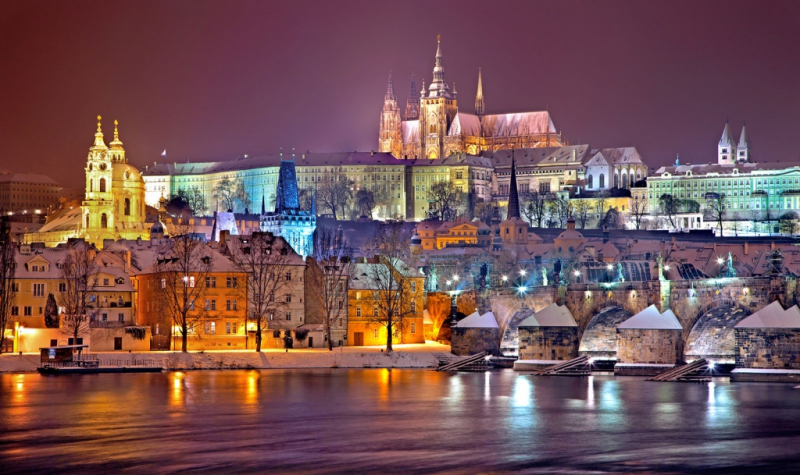
commons.wikimedia.org 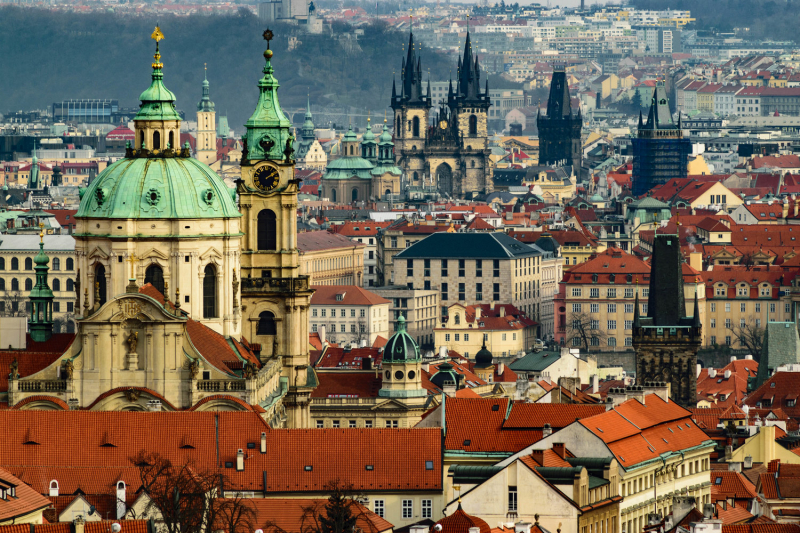
commons.wikimedia.org -
The Czech Republic's capital is the city of Praha. It is a beautiful city in the center of Europe and the main economic and cultural hub of the Czech Republic. Prague has grown from its initial tiny riverfront communities to encompass its hills, river basins, and terraces along the banks of rivers. Prague's metropolitan region is 192 miles square (496 square kilometers). Prague is the largest and most populous city in the Czech Republic, which is one of the interesting facts about Prague. A bigger metropolitan region that includes Prague brings the population up to almost 2.6 million. In all, around 10 million people are living in the nation.
The city's central business district is a major hub of employment and traffic congestion because of its historic buildings, bridges, and museums. A mixed zone of industrial and residential neighborhoods surrounds the center and is where the majority of the city's residents and employees are located. The outer city development zone surrounds this region, and beyond it is still another zone of growth that includes new industrial zones, parks, and recreation spaces, and sporting facilities. Finally, there is a stretch of farmland and open countryside where market gardening initiatives and farms supply Prague's needs for food.
Prague is a city with many different cultures, one of Europe's largest capitals. Prague's population is uniform. Although there is a tiny Slovak community, Czechs make up the vast bulk of the population. The city has sizable communities of English, Slovakian Ukrainian, Russian, Vietnamese, and Americans. Roughly 68 percent of the population is made up of native Czechs, and 32 percent of immigrants. There are more women than males in the city, and a considerable section of the female population is past the age of reproduction. The number of people moving into the city has increased.
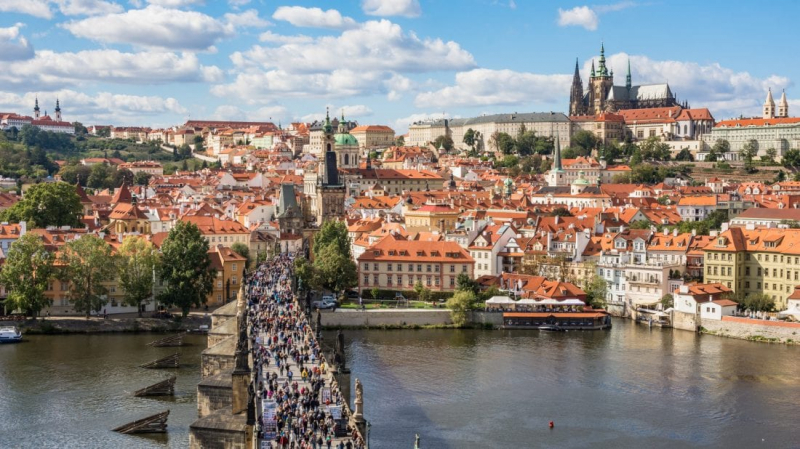
wonderfulengineering.com 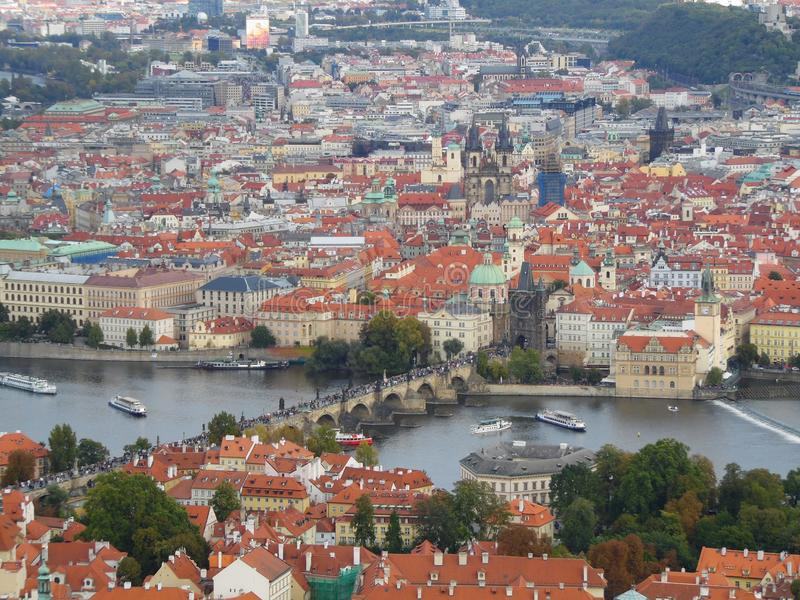
wonderfulengineering.com -
Prague Castle is the jewel in the crown of Prague's cityscape. An intriguing fact about Prague is that the castle complex, which is in the city's Hradcany neighborhood, measures 70,000 square meters. Prague Castle, one of the biggest castles in the world, is perched atop the hill and serves as the national emblem of the Czech Republic. The castle is massive and, along with St. Vitus Cathedral, contributes to the picture-perfect postcard view of Prague.
Many of the architectural trends from the previous millennium are represented in the castle structures. The Gothic St. Vitus Cathedral, the Romanesque Basilica of St. George, a monastery, as well as several palaces, gardens, and watchtowers are all part of Prague Castle. Tourists can access the majority of the castle's areas. Numerous museums are housed in the castle, including the National Gallery's collection of Bohemian baroque and mannerism artwork, an exhibition on Czech history, the Toy Museum, and the Prague Castle Picture Gallery, which is based on Rudolph II's collection. The courtyard of Burgrave Palace frequently hosts the Summer Shakespeare Festival.
The UNESCO-listed Prague Castle, built in the ninth century, is the city's most important landmark. Don't forget to visit areas like Kutna Hora, Cesky Krumlov, or Karlovy Vary if you enjoy visiting UNESCO sites. One of the most visited sights on the website is the castle, which is centered around St. Vitus Cathedral. Every year, more than 1.8 million people visit it.
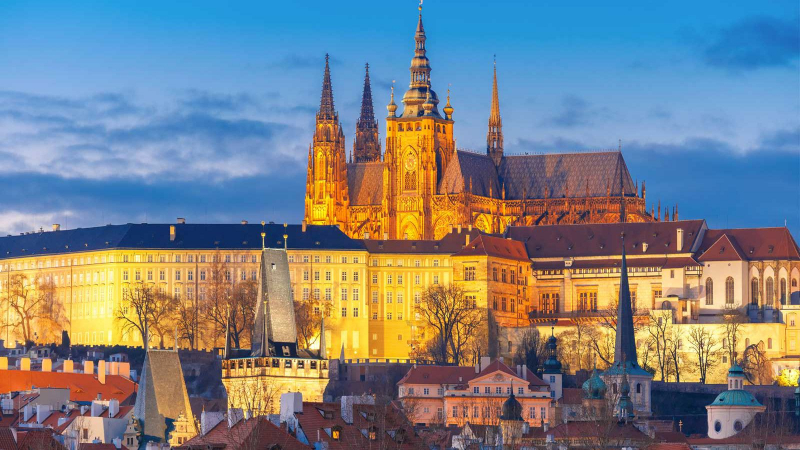
www.archute.com 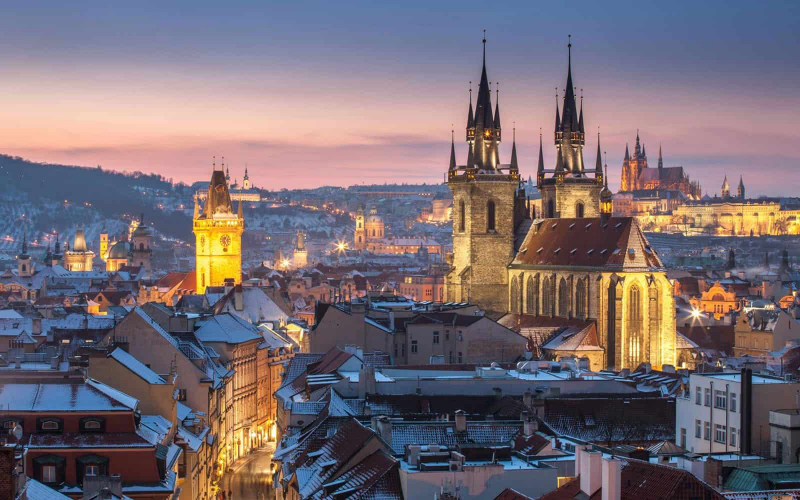
www.archute.com -
One of the interesting facts about Prague is that it's home to the longest river in the Czech Republic. The Vltava River is not shared by any other country with the Czech Republic. The mainstream of the river originates on the Erná Mountain and empties into the Elbe River. The river was essential for trade, industry, irrigation, and water supply in the Middle Ages. Prague's development was greatly aided by the river. Nine dams have been built for water management and hydroelectric power generation since the river is prone to flooding. Prague tourism has also been made easier by the Vltava River.
The 28,090 square kilometers drainage basin of the Vltava river, which is 430.3 kilometers long, covers more than half of Bohemia and approximately a third of the overall land of the Czech Republic, making it the longest river in the Czech Republic. The river flows through Prague for 31 kilometers, passing through 18 bridges, notably the Charles Bridge. Up until 1912, when the Vinohrady Water Tower stopped pumping water, people drank from the river. It is, nevertheless, the source of drinking water if the elivka and Kárané sources' water supply fails or has to be repaired. The lengthy river segment upstream of the Podol facility is subject to tighter, second-degree pollution protection rules, and the Podol water processing plant is prepared for such situations.
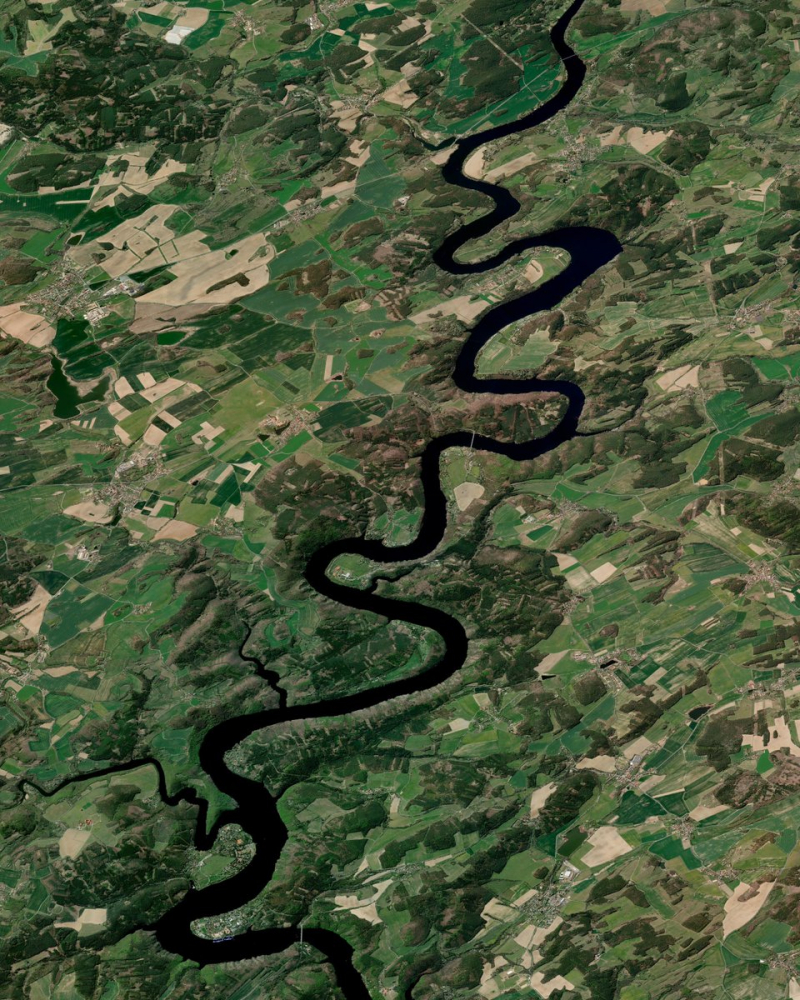
en.wikipedia.org 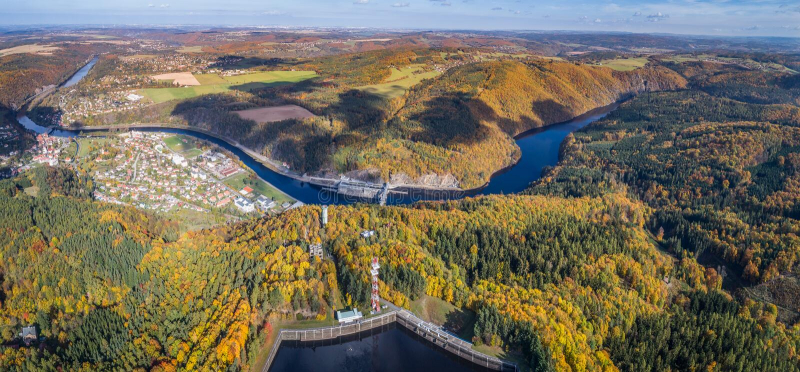
en.wikipedia.org -
There are numerous reasons why the Czech Republic is well-known, but its beer is without a doubt an indispensable well-known product. Every time someone from outside the country tells about their visit to Prague, they invariably rave about how lovely the city was and how excellent the beer was. Even those who don't drink beer are aware that Pilsner originated in Prague. The now-famous beverage was created by natives in Czechia in the middle of the 19th century. However, the first beer was produced in 993 AD and was referred to by the locals as "liquid bread."
One of the interesting facts about Prague is that the nation is home to various well-known brands and that due to its well-known low costs, more beer is consumed there than anyplace else in the world! In comparison to the rest of the globe, beer in Prague is quite affordable. On average, a draft beer costs around USD 2, one of the reasons Prague is so well-liked, especially among young people, is that it costs less than 7 USD in New York, 7 EUR in Paris, or 8 USD in Sydney. The nation consumes 150 liters of alcohol annually per person, and Zizkov, a favorite hangout for foreigners and students in Prague, is considered to have the highest beer density in the world per square kilometer.
.
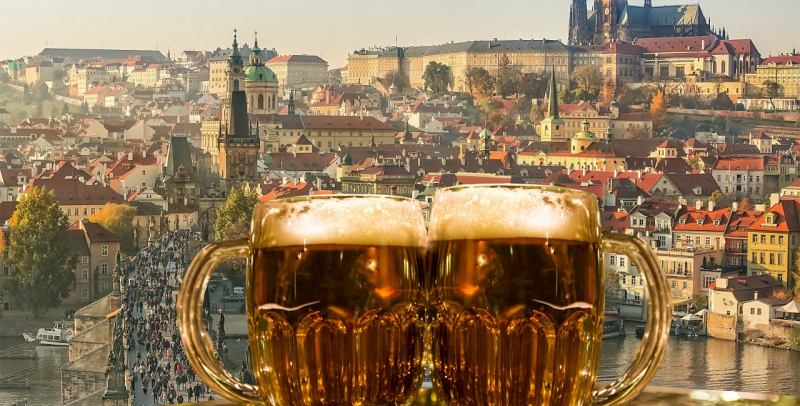
www.visitczechrepublic.com 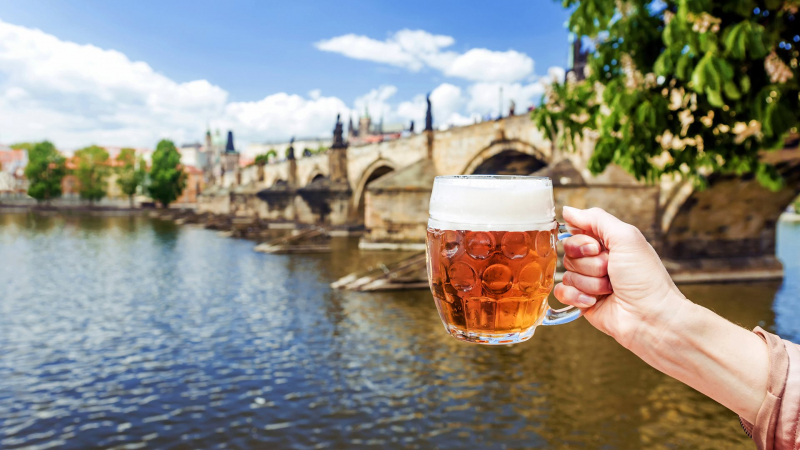
www.visitczechrepublic.com -
The relative positions of the Sun, Moon, Earth, and Zodiac constellations are displayed on The Orloj, a Prague astronomical clock. The clock is the third-oldest astronomical clock in the world and the oldest one that is still running. It was built in 1410 by local clockmakers Mikulá of Kada and Jan indel. Over its more than 600 years. The nicest part is that it gives its viewers some theater on the hour, every hour, in addition to telling the time and giving the date. The clock is divided into numerous separate components to offer this level of functionality.
Its stunning and exquisitely detailed celestial dial is the first and most prominent feature of the clock. This depicts numerous astronomical information, including the Sun's and Moon's positions in the sky. Roman numerals may be seen as one approaches the middle. These are used to display 24-hour time, much as the majority of conventional clocks. Two blue doors that open to show "The Walk of the Apostles" are located just above the main clock. The upper pane of the clock displays the 12 apostles moving every hour on the hour between the hours of 9:00 am and 9:00 pm. The calendar dial is located underneath the main astrolabe and clock. Its outside ring carries the description of each day for the full year, and its center displays the emblem of Prague's Old Town. At the top, the day of the week is displayed. A zodiac sign embedded in a medallion serves as a further representation of each month. Around the dial's perimeter, the date is displayed along with other yearly occasions, such as each Saint's Feast Day.
It has undergone several modifications and repairs, with the most recent one being in 2018. During the clock's renovation in 2018, a hidden message was found within one of its sculptures. They discovered that the Apostle of St. Thomas was lighter than any of the other sculptures while doing restoration on some of its carved figures. They noticed the statue was hollow when they knocked on it. An unusual metal casing was discovered within the statue after it had been removed and X-rayed. A thorough examination of each artifact found during the refurbishment work is planned. A fresh message for future generations will also be inserted into the tower by the restorers.
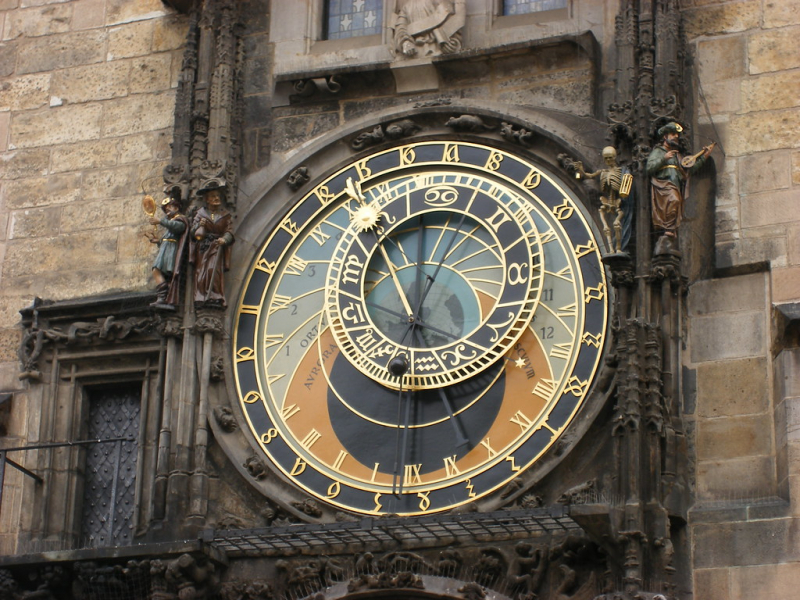
www.czechcenter.org 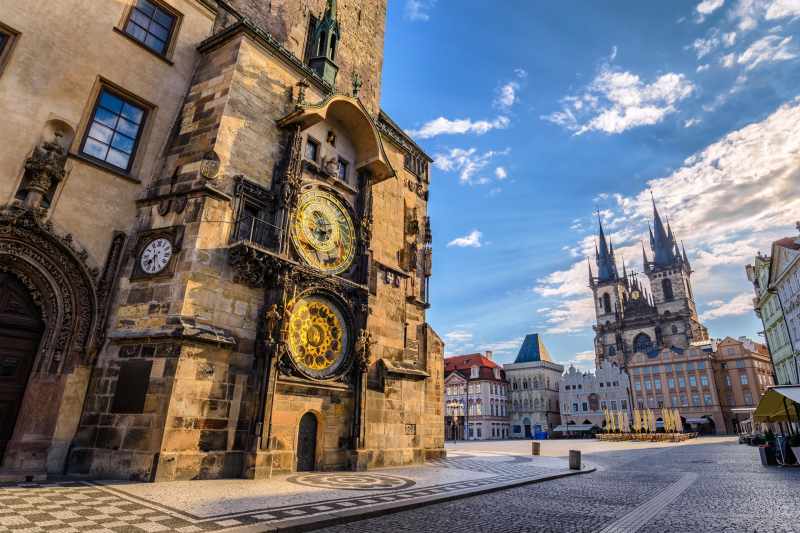
www.czechcenter.org -
Prague is beautiful, and it appears that the residents have done so. The John Lennon Wall is a vibrant graffiti wall covered in inscriptions and peace-promoting lyrics from well-known Beatles songs. An intriguing Prague tidbit is the connection between the city and the late Beatles. A solitary image of John Lennon's face and some words were painted on the wall by an unidentified artist. Despite never having been there, Lennon rose to fame as a pacifist symbol among young Czechs following his 1980 assassination, and both visitors and residents are welcome to visit and leave their writing on the wall, eternally leaving their stamp on the community.
The original image of John Lennon is long gone behind fresh coats of paint since the wall is constantly changing. Even after officials repainted the wall, the next day it was once more covered in poetry and flowers. Today, the wall stands as a representation of universal values like love and peace. The Sovereign Military Order of Malta owns the wall and permitted the graffiti. But in 2014, a mist of white paint covered the wall, erasing the words of peace that had been written on it over many years. Students painted the wall to commemorate the 25th anniversary of the Velvet Revolution in the Czech Republic, but graffiti with messages of hope and peace quickly covered it once again. In Mala Strana, situated between Charles Bridge and Kampa Park across from the French Embassy, is where you can discover Lennon Wall.
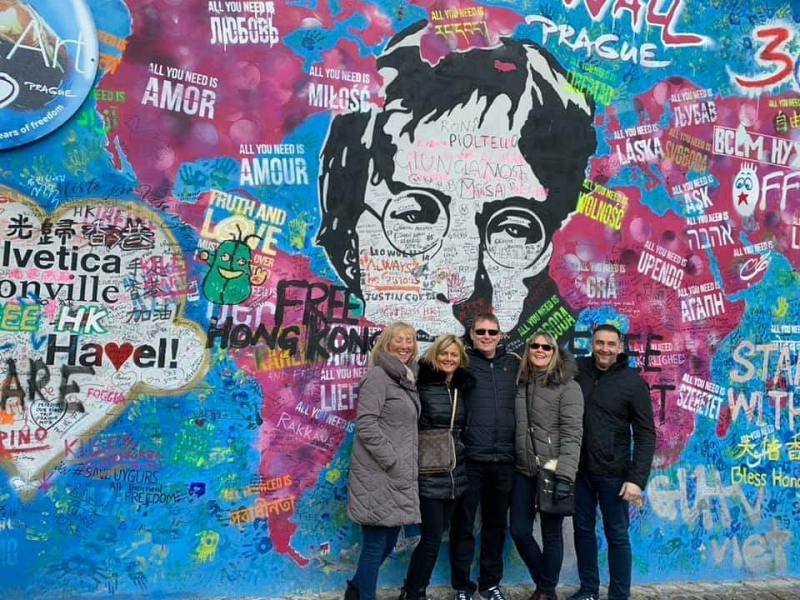
www.tripadvisor.com 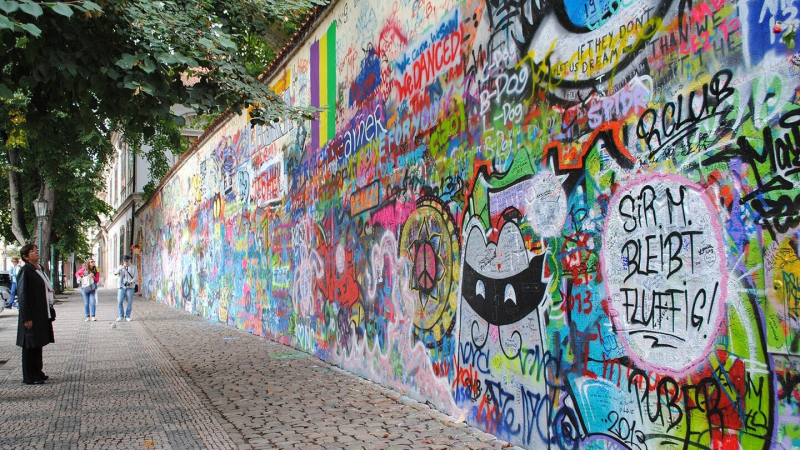
www.tripadvisor.com -
Prague is regarded as one of central Europe's most attractive cities, yet it also has one of the continent's most repulsive structures. Many of the strange sculptures that dot Prague's urban landscape are the creation of the country's most well-known artist, David Černý of Czech descent. The Zizkov Tower 216-meter-tall, commonly known as the television tower, is a piece of soviet architecture that, like most of that era's construction, is utterly despised by the people. The Tower was once considered among the ugliest structures in the world.
As its name may imply, it is situated in the heart of Prague's thriving Zizkov neighborhood and is thought to be a significant disturbance to the city's usually stunning skyline. With the installation of his iconic barcode baby statues climbing up the tower in recent years, local artist David Cerny has made an effort to improve the tower's aesthetic appeal.
Next, check out the sculpture of two life-sized bronze guys in front of the Franz Kafka Museum, which is a strange and unreasonable construction at this location. Additionally, search for the man dangling from an umbrella near the New Town crossroads of Na Zborenci and Odboru streets. On Husava Street, another man is dangling by his hand from a hung pole. The Lucerna Palace, which is close to Wenceslas Square, also has a monument of an upside-down horse.
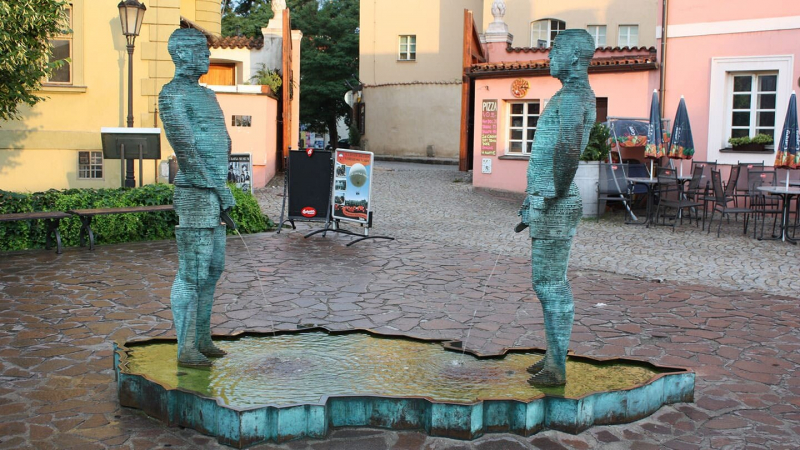
structurae.net 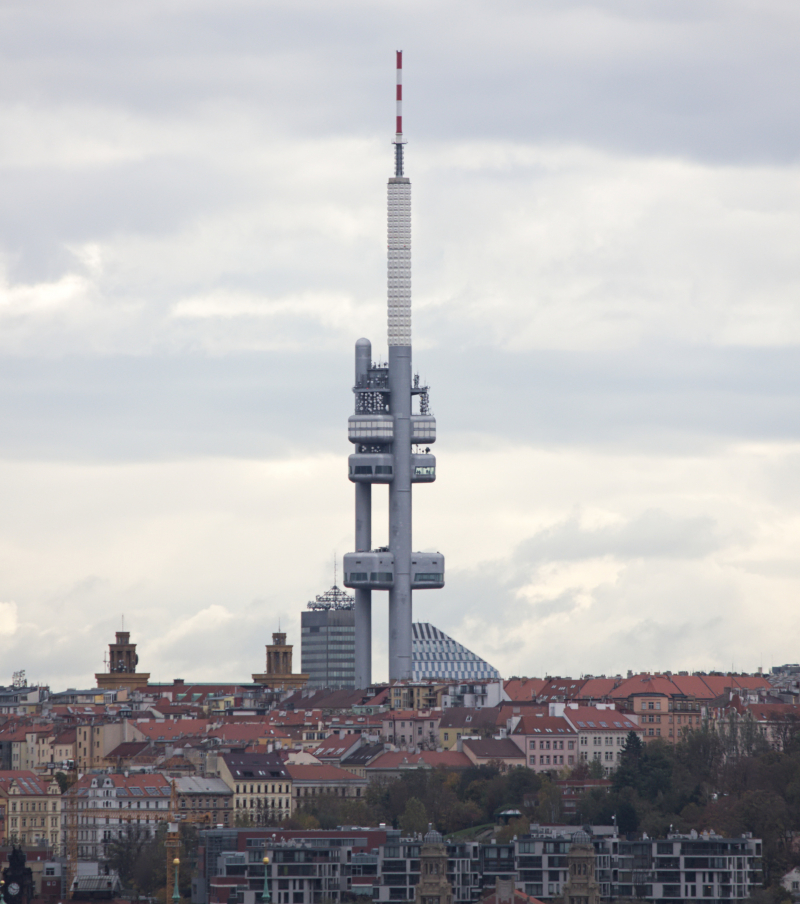
The Zizkov Tower - structurae.net














